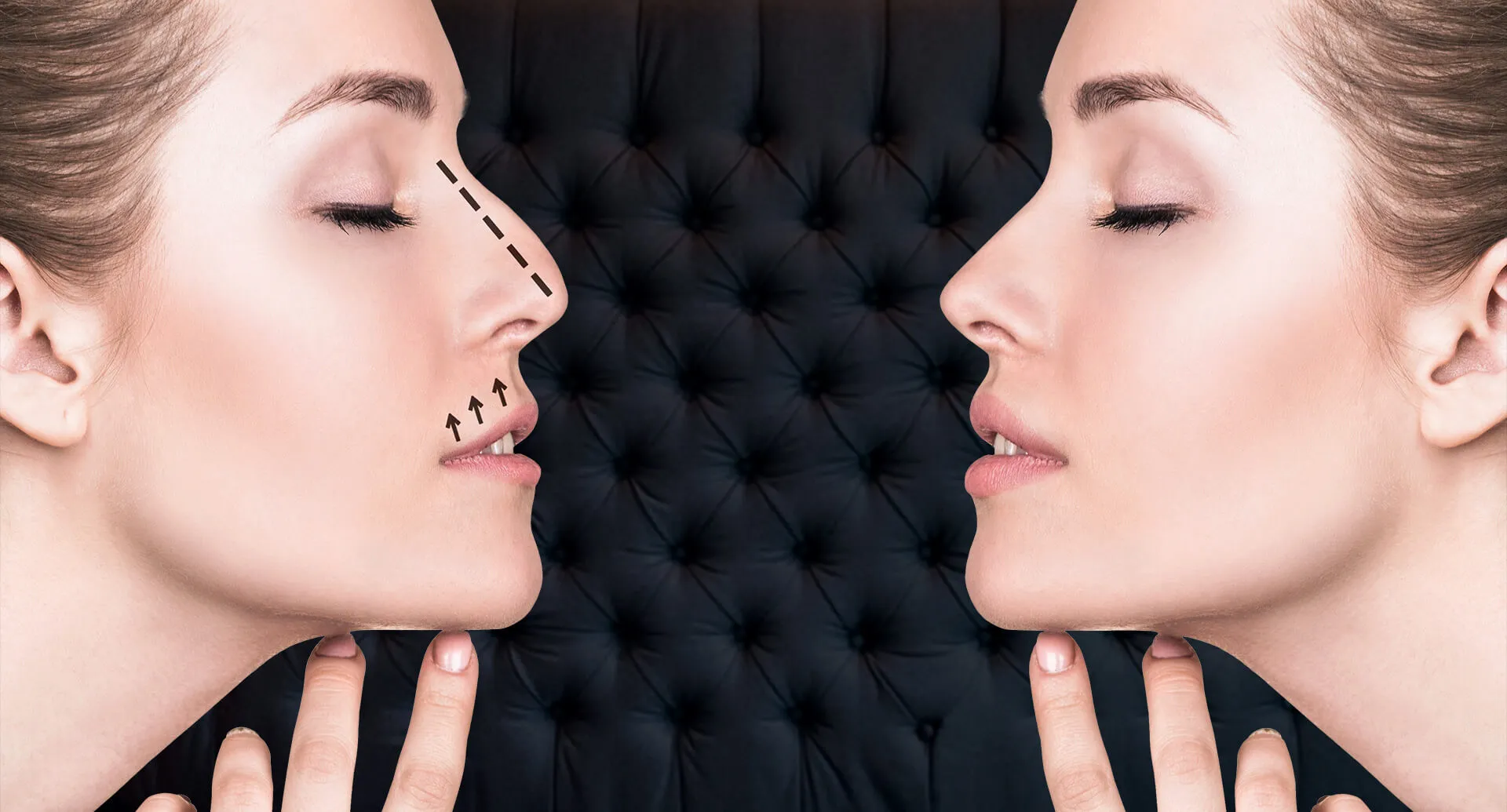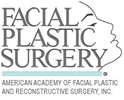Dermal Fillers Uses Risks & Complications
Dermal Fillers & Injectables – Safety, Warnings & Complications
Below is a brief description of opinions from our practice and our experience with non-invasive treatments. These observations and guidelines do not reflect comprehensive, evidence-based recommendations.
When searching for the most suitable filler it is important to weigh the risks and benefits comprehensively. Injectable products by nature are not totally controllable. So, what happens if they are injected into the wrong area or migrate? Can you fix them? Will it cause problems? Permanent injectables carry the benefit of lasting lifelong. Depending on how the injection goes, this can be a wonderful or devastating thing. Please remember that when choosing which injectable is best for you. Also, be aware of FDA warnings listed below. Permanent fillers, when used, should only be injected by the highest level, board certified practitioner to avoid major problems. Problems can occur with ANY type of filler and any level of practitioner but are less likely with some than others.
What is the difference between temporary, permanent and semi-permanent fillers?
- Temporary fillers are always safer to use with a lower risk profile overall.
- Temporary fillers can be molded with more ease.
- Temporary fillers can be removed usually – HLA fillers can be dissolved with the use of Hyaluronidase injections.
- Temporary fillers are typically re-absorbed by the body over the course of 24 months.
- Your body can react to all types of fillers. When it reacts to permanent fillers you may encounter life long, progressive problems.
Temporary Fillers
Which fillers are temporary and how long do they last?
- The most common temporary fillers previously were made of collagen, but these had a high reaction rate.
- Most temporary fillers now are made of Hyaluronic Acid Gel (HLA).
- Calicum Hydroxylapatite (CaHA) fillers such as Radiesse can be categorized as temporary or semi-permanent since the crystals may remain in the tissues long after the effect disappears.
- These fillers typically last from 6-18 months depending on the type of filler used, the amount of filler used and the location the filler was placed
- Common brand names in the United States include:
- Juvederm: Juvederm, Juvederm XC, Voluma, Volbella, Vollure
-
-
- Read about issues encountered with classic Juvederm below (not the rest of the Juvederm products)
-
-
- Belotero
- Restylane: Restylane, Restylane Silk, Restylane Lyft, Restylane Defyne, Restylane Refyne
- Juvederm: Juvederm, Juvederm XC, Voluma, Volbella, Vollure
What are common complications of temporary fillers?
- Complications of HLA Fillers
- Vascular Risk/Ischemia: All fillers have a risk of complications associated with intravascular injection, occlusion or compression. This may cause tissue ischemia and needs to be treated rapidly. Injection near the eye carries an extremely low but devastating risk of blindness. After HLA filler is dissolved following an occlusive vascular event you may notice reactive redness or hyperemia from the irritation or revascularization event. You may also notice blistering or a vesicular eruption from the ischemic insult. Many practitioners mistake this for an allergy or infection. Steroid creams and nitric paste are often used to help resolve this and prevent any scarring. Aspirin, hyperbaric oxygen and IV ozone are also commonly used. The treatment is up to the practitioner. Long-term pain may be experienced for up to 3 years due to residual inflammation.
- Allergy or Reactivity: Patients may experience allergy to the HLA gel or the lidocaine within the gel. True allergy is uncommon but possible. More often, patients experience untoward edema or overall reactivity to the gel caused by systemic allergies, improper placement of filler, or simply bad luck. This can be treated with a temporary burst of steroids, antihistamines, homeopathic medications, doxycycline as an anti-inflammatory antibiotic, or removal of filler. The treatment choice will vary depending on presentation and the practitioner’s judgement.
- Infection: Infection or biofilms are rare but should be treated with antibiotics giving some sort of anaerobic coverage. Fillers should NOT be dissolved if there is a true active infection until the infection resolves. Dissolving the filler during an active infection may disseminate the bacteria widely. One must always consider the possibility of mycobacterial infection for atypical presentations.
- Unfavorable outcomes: These may come from placing certain fillers where they don’t belong. Placing Radiesse under the eye may cause long-term inflammation that is quite difficult to remedy. Placing Classic Juvederm under the eye or above the Vermillion border of the lip can also cause long term, vague inflammation and discoloration. This may give patients a thickened, heavy lip or simian appearance. Even if the filler wasn’t injected there it can easily migrate. Placement of Juvederm in these areas should be avoided in most people to minimize risk of issues. Although most fillers tend disappear over 18 months, when Juvederm is placed or migrates to the under eye or upper lip above the vermillion, the effects may easily last 7 years from our observations.
Permanent & Semi-Permanent Fillers: Grouped together because the issues encountered are similar
Which fillers are permanent or semi-permanent?
- Fat
- Autologous (your own fat), Allogenic (from a donor/cadaver)
- Silicone (not including implants)
- S1000, SI-1000, Injectable Silicone
- Polymethylmethacrylate (PMMA)
- Bellafil, Artefill, Aqua Secret, ArteSense, Aphrodite Gold, AquaMid (Polyalkylimide), Artecol
- Calcium Hydroxylapatite (CaHA)
- Radiesse
- Poly-L-Lactic Acid
- Sculptra
What are the uses and risks of Permanent or Semi-Permanent fillers?
Autologous Fat:
Uses:
- Grafting to any part of the face or body as a solid graft, cream, liquid or injectable. Fat grating is generally considered safe.
- Fat is typically suctioned and harvested from the abdomen, flanks or inner thighs and injected into the face for volumization.
- Small amounts of fat grafted to the face at the proper depth can give a wonderful accent and boost to the shadows caused by facial aging.
- Fat can also be emulsified or processed into a type of “nano-fat” or micronized fat. This is typically used for its progenitor cell potential in tissue healing and tissue health. This has a very low rate of complications when compared to regular fat transfer. This can be combined with regular fat transfer to safely treat superficial areas in the skin.
- Fat can be used to fix traumatic or volumetric defects. It can also be used for cosmetic enhancement of the face.
- The survival rate or “take rate” of transferred fat ranges from 0-100% from patient to patient. Practitioners can give an estimate of the survival in a population but not in each individual person.
- Fat injected deep appears to have less complications than when injected superficially.
Complications:
- Severe complications are rare for facial fat transfer, but also include vascular occlusion, tissue ischemia and blindness.
- More common complications are irregularities caused by superficial fat injections. When these occur, they are extremely difficult to fix. This is important to remember for any patient receiving fat injections to the face.
- Fat injections, like silicone, may cause chronic inflammation in the face. Similarly, the body may react to the fat over time and cause distressing issues for the patient.
- Fat injected under the eye may continue to proliferate and cause long-term swelling.
- Fat injected superficially into the face may cause rippling, dimpling, discoloration, asymmetry, acne-appearing skin or peau-du-orange (orange peel skin).
- Fat injected into the lips may cause significant asymmetry and nodular irregularities. If the fat migrates above the vermilion border, it can cause permanent damage to that area and cause heaviness, fullness, asymmetry, limitation in motion, and discoloration.
- Misplaced or hypertrophied fat may be reduced or removed surgically, with deep heating ultrasound or RF devices, or Kybella.
- Liposuction of the face is not generally recommended.
Silicone:
Uses:
- In general, there aren’t many good uses for the general population that other fillers can’t do more safely and effectively. There are however very specific situations and indications that another practitioner may choose silicone for, which is completely acceptable.
- FDA approval for permanent (non-absorbable) dermal fillers is limited ONLY to correction of nasolabial folds and cheek acne scars in patients over the age of 21.
- Most of the use of silicone in the face is off-label and should be done conservatively and cautiously. This means that some practitioners may safely use small amounts in certain parts of the face without any significant risk.
Complications:
- The complication rate from silicone injections is very high.
- Silicone CANNOT be dissolved.
- Most practitioners were not aware of this until recently, as the data has increased over time.
- FDA has listed several warnings AGAINST the use of silicone in various parts of the face and in the body especially in large amounts.
- Silicone injections may occur immediately. Most complications are indolent and begin to show themselves after 5 years. Once they occur, they tend to continue lifelong. (This means: if you have had silicone injected into your lips you might want to avoid injecting again. Although the problems haven’t occurred yet, they may occur in the future)
- Silicone injections in most cases CANNOT be removed. For the most part this means that if you had a surgery to remove the silicone, you were most likely removing problems caused by the silicone and not the silicone itself. Silicone tends to integrate into the surrounding tissues and migrate as well.
- Silicone injected under the eyes or anywhere near the eyes can cause permanent and severe swelling and deformity of the eyes. This typically cannot be repaired or removed.
- Silicone injected into the lips will typically cause expansion and irregularities years after it was injected. This is not always the case, but it is certainly common. This will lead to a life-long struggle of reparative measures, which may be mild or severe.
- Silicone is extremely inflammatory. Surgically manipulating a face with silicone in it may incite or revive swelling.
- Steroid injections for silicone related edema do not typically help to any significant extent.
- Large amounts of silicone injected into the body may have severe complications of migration to other parts of the body such as the lung, heart and brain resulting in permanent damage to those tissues and lead to stroke or death.
- Injectable silicone can lead to ongoing pain, infection, scarring, and disfigurement.
- SHOULD I GET SILICONE INJECTION FOR MY LIPS?
- Please don’t. Even if you have in the past and nothing went wrong.
Polymethylmethacrylate (PMMA) & Polyalkylimide
Uses:
- It is important to note that acrylics, polymers and any injectable in the realm of silicone may demonstrate equal or lesser complications than silicone itself.
- PMMA’s have been classified as semi-permanent fillers, but they may last much longer than assumed by the companies selling them.
- Similar to silicone, most would limit use of PMMA’s to acne or nasolabial folds.
Complications:
- PMMA’s appear to be less reactive than silicone but are still reactive nonetheless and may be permanent.
- Complications and risks are lesser but similar to those listed above for silicone from what we have seen in our practice.
- PMMA’s CANNOT be dissolved and for the most part CANNOT be completely removed once injected.
- Read above for a list of potential issues associated with silicone as well as PMMA polymers.
Calcium Hydroxylapatite – Radiesse
Uses:
- Radiesse is composed of Calcium Hydroxylapatite (CaHA) in a gel matrix. CaHA is a bony type mineral.
- Radiesse is considered to be a temporary filler. Small collections of the crystals can persist for years, although most will disappear within a year as the injectable is broken down into calcium and phosphate.
- Since Radiesse is composed of a bony, crystalline material, we suggest that it be used over the bone and more judiciously in the soft tissues.
- Radiesse is reported to stimulate collagen production but from our experience this is simply a fibrotic reaction similar to what is seen with polydioxanone or other absorbable threads.
Complications:
- Radiesse is not immediately dissolvable. It should never be injected anywhere at risk of vascular compromise.
- Radiesse is made of a crystalline material. Injecting this into the soft tissues may cause slow, indolent inflammation.
- Avoid injecting the under eyes with Radiesse. This can cause significant, chronic swelling and it cannot be removed easily.
- Avoid injecting superficially into the skin. This will likely leave lumps and bumps that may take years to resolve.
- Some practitioners have attempted to speed the removal or absorption of Radiesse by repeatedly injecting and needling the affected areas with saline.
- Radiesse should not be injected into the hands or upper extremities of patient who have undergone a mastectomy.
- Radiesse should not be injected into the lips.
- Radiesse should not be injected into the nose.
>Poly-L-Lactic Acid (Sculptra)
Uses:
- Sculptra is known as a stimulator or volume-producer rather than an injectable filler. The effects are meant to be cumulative and semi-permanent.
- Sculptra is composed of a suture-type material similar to what vicryl sutures are made of. When injected, it is intended to stimulate collagen production and slowly increase volume.
- Sculptra is a good choice when adding diffuse volume such as when dealing with facial atrophy, weight loss and lipodystrophy as seen in HIV patients.
- Sculptra is not as predictable when used to perform discrete areas of filling as it accumulates water and may weigh certain areas down.
Complications:
- Complications from Sculptra are uncommon
- The most common complication caused by Sculptra is the formation of nodules. Similar to Radiesse, needling with saline may help speed up the resorption process.
- The most common issue encountered is mild redness, pain, bruising or swelling at the injection site.
- For the most part, Sculptra cannot be surgically removed.
Please keep in mind that the above guidelines are those observed by our practice to minimize complications when these procedures are performed in our hands. This does not mean that fillers cannot safely be placed by other practitioners differently than we do.
Our medical team at Beverly Hills Center has many different options for giving you the look you desire, with or without surgery. To learn more about our dermal filler and injection options for minimally-invasive cosmetic procedures, contact us today to schedule a consultation at our clinic.

















